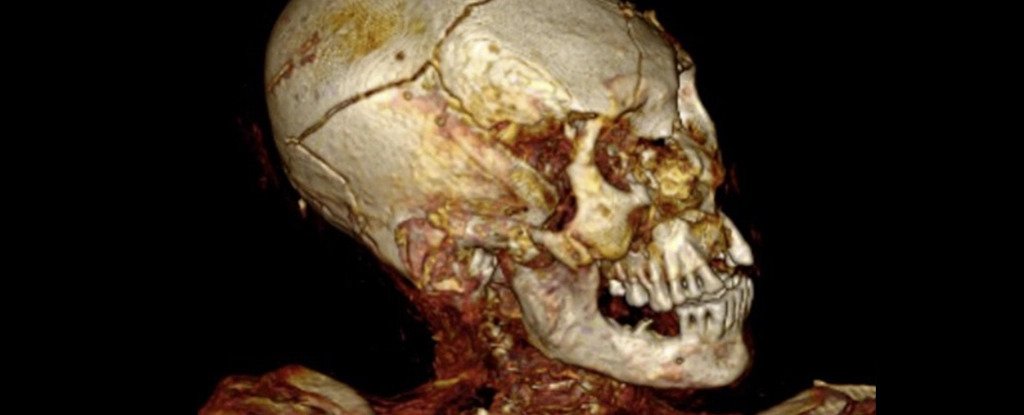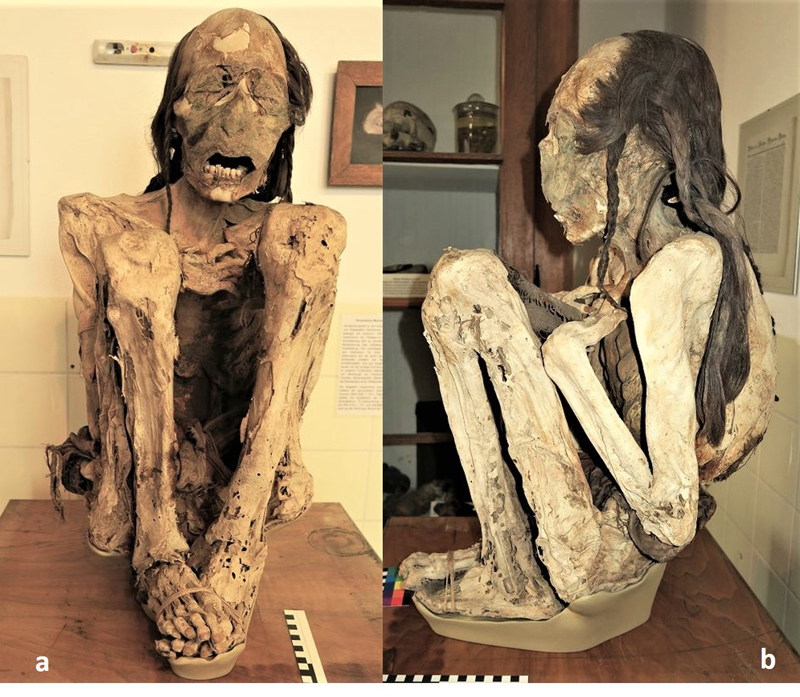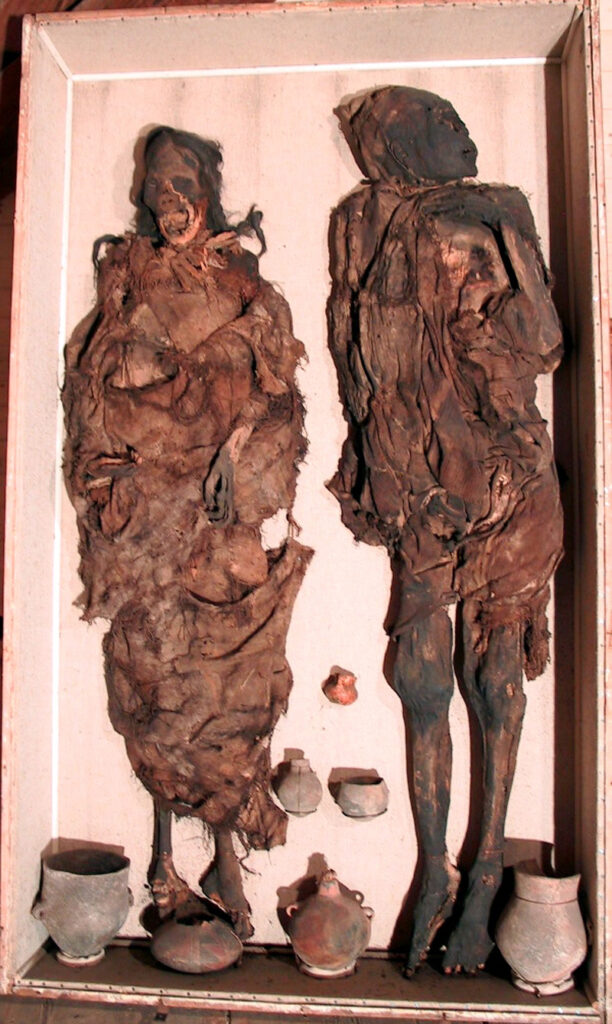South American Mummies Were Brutally Murdered, CT Scans Reveal

One secret of the past that can be revealed through the study of skulls and skeletons is how frequent violence was amongst our ancestors. However, with their preserved soft tissues, mummified remains can be an even more telling indicator than bones alone.
That brings us to a new analysis of three pre-Columbian South American mummies, carried out with 3D computed tomography (3D CT) scans that use X-rays to view the internal state of the remains without having to open them up.
The research reveals that two out of these three people were brutally killed.

These are naturally mummified bodies, created in dry environments when fluid is soaked up by the surroundings of a body faster than the rate of decay. These conditions are common in the southern part of South America.
“Here we show lethal trauma in two out of three South American mummies that we investigated with 3D CT,” says pathologist Andreas Nerlich, from the Munich Clinic Bogenhausen in Germany.
“The types of trauma we found would not have been detectable if these human remains had been mere skeletons.”
The male mummy from the Philipps University Marburg, Germany originally belonged to the Arica culture in what is today northern Chile.
He most likely lived in a fishing community and showed signs of severe tuberculosis on his lungs. Aged between 20 and 25 years, radiocarbon dating suggests that this man died between 996 and 1147 CE.
As for the male and female mummies from the Art and History Museum of Delémont in Switzerland, they probably came from the region of Arequipa in what is today southwestern Peru. The man is thought to have died between 902 and 994 CE, and the woman between 1224 and 1282 CE.
Signs of “interpersonal violence” were identified by the researchers in the two male mummies, violence that would have killed them on the spot.
It would seem that the Marburg mummy died from a heavy blow to the head and a stab to the back, which may have come from one or two attackers.
As for the male Delémont mummy, the study notes “massive trauma against the cervical spine which represents most likely the cause of death” – so a hard blow to the back of the neck most likely caused him to meet his end.
Though the female Delémont mummy also had damage to the skeleton, it’s thought this came after death, probably during the burial.
“The availability of modern CT scans with the opportunity for 3D reconstructions offers unique insight into bodies that would otherwise not have been detected,” says Nerlich.
“Previous studies would have either destroyed the mummy, while x-rays or older CT scans without three-dimensional reconstruction functions could not have detected the diagnostic key features we found here.”

As chilling as the findings of the study might be, learning about these deaths and these types of violence is incredibly useful in getting a better picture of how these ancient civilizations lived and got along – or didn’t get along.
While mummified remains are nowhere near as common as skeletons, there are still plenty that have been recovered and preserved in museums, and which can be given the same kind of scientific detective treatment.
“Importantly, the study of human mummified material can reveal a much higher rate of trauma, especially intentional trauma, than the study of skeletons.”
“There are dozens of South American mummies which might profit from a similar investigation as we did here,” says Nerlich.
The research has been published in Frontiers in Medicine.





